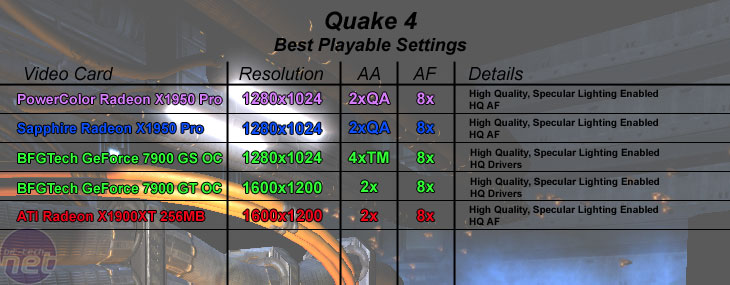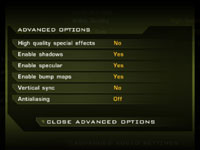
Quake 4
Publisher: ActivisionWe used the full retail version of Quake 4 patched to version 1.3.0. It is the fourth game in the Quake series, based on the technically-sound Doom 3 engine. However, unlike Doom 3, we found that the game benefits from at least 2x anti-aliasing, and the experience with anti-aliasing at a slightly lower resolution was better than increasing the resolution with no AA applied.
Both anti-aliasing and anisotropic filtering were controlled from inside the game. When you select "High Quality" mode, 4xAF is automatically enabled, and when the "Ultra Quality" mode is enabled, 8xAF is automatically applied to the scene. We forced anisotropic filtering values via the console using "image_anisotropy".
We did a manual run through from a five minute section of the Nexus Hub Tunnels level and found that a minimum of 15 frames per second and an average of 45-50 frames per second in our test section was deemed to be playable across the rest of the title.
________________________________________________________________________________


Both the BFG Tech GeForce 7900 GT OC and ATI’s Radeon X1900XT 256MB were in a different league. We were able to increase the resolution to 1600x1200 with 2xAA enabled and still maintain smooth gameplay. Generally speaking, the Doom III engine (that powers Quake 4) looks better and better as you increase the resolution – Quake 4 was no exception there.
The texture filtering problems that NVIDIA’s hardware has in some titles are not apparent in Quake 4, which is a good thing to see. In the same way, ATI’s high quality anisotropic filtering didn’t have much of an effect in this title either.

MSI MPG Velox 100R Chassis Review
October 14 2021 | 15:04









Want to comment? Please log in.